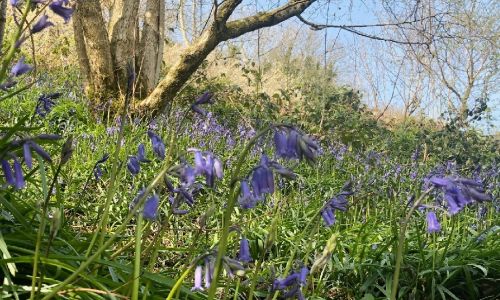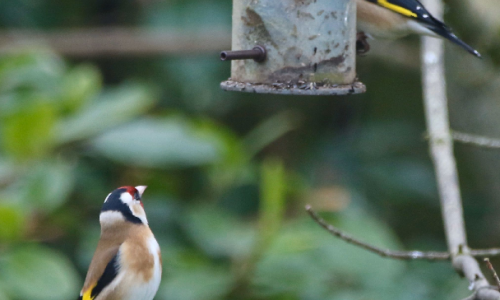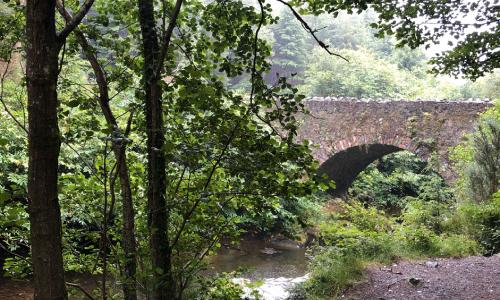Planting trees at your veterinary practice: Part Two
Appropriate trees, where to get them and how to plant them.
In the first part of this resource we looked at some of the things we should consider when wanting to introduce new trees to our veterinary practice settings. This second part mentions some trees that might be appropriate and how to acquire them and go about getting them in the ground.
Smaller, Easy-Growing, Native Or Naturalised Trees To Consider For The Practice Setting
- Rowan (Sorbus aucuparia; “Mountain Ash”) – importantly not actually an Ash (!) and thus not affected by Ash Dieback. Insect-pollinated. Birds love the late summer red berries.
- Silver Birch (Betula pendula) – Wind-pollinated. Provides dappled shade. Attractive silver bark gradually peels away to make good kindling.
- Apple (Malus domestica) – Insect-pollinated (and it’s more complex than you might think! Either research your apple variety groups or take the easy way out and buy a self-fertile or a multi-pollination-group “family tree”). Obviously can produce apples which should be useful for eating/cooking/juicing depending on variety but, if not collected, will produce a wasp-attracting mess.
- Holly (Ilex aquifolium) – Very slow growing. Insect-pollinated. Females will produce red berries but it could take two decades before they appear! Avoid planting where future prickly leaves may cause problems for passers-by.
- Hazel (Corylus avellana) – Fast-growing; wind-pollinated. Edible hazelnuts in the autumn (good for people, birds, squirrels and smaller mammals). Can be cyclically coppiced for bean poles, etc (i.e. cut down to near ground level where it will then re-generate over 5-7 years, when another harvest of poles can be taken and the process starts again).
- Elder (Sambucus nigra) – insect-pollinated; can quickly get quite large, however if well-managed it will produce lots of fragrant elderflowers (used for cordials and sparkling wine) and black elderberries (birds love them and also used for wine-making).
- Plum (Prunus domestica) – insect-pollinated; spring flowers followed later by fruit (but often only crop in alternate years). The fruit is useful if you pick it but, even more than apples, will lead to wasp-attracting mess if left to windfall.
- Cherries (Prunus sp.) – insect-pollinated; approximately 400 species, some of which will happily grow in containers or very small areas of ground, and some which produce fruits (generally only appetising to birds and small mammals). Many are visually attractive in flower and relatively easy to manage and could be amongst some of the most useful trees to consider.
- Japanese Maple (Acer palmatum) – insect-pollinated; thousands of cultivars mean huge variations in size and appearance, although all are intended to be visually attractive. Some will do very well as container trees.
Native Hedge Plants To Consider
N.B. if allowed to, these will all grow into trees!
- Hawthorn (Crataegus monogyna) – Insect-pollinated. Attractive white flowers in spring and red berries in autumn (good for birds and small mammals, and hawthorn jelly!). Fast growing, with sharp thorns, it will help produce good boundary hedges (remember those thorns when planting anywhere near pathways – there are far nicer hedges to accidentally brush against!)
- Crab Apple (Malus sylvestris) – Insect-pollinated. White flowers, followed later by small, very acidic, hard apples. In a hedge situation these typically fall in winter into the depths of the hedge where they can provide useful wildlife food.
- Wayfarer Tree (Viburnum lantana) – insect-pollinated. Small, off-white flowers, with bird-friendly red berries that turn black when fully mature.
- Goat Willow (Salix caprea) – wind-pollinated, but goat willows are very attractive to bees and many other insects (including several moths). Fast-growing, particularly in wet conditions.
- Dogwood (Cornus sanguinea) – insect-pollinated; dull-white early summer flowers become more heavily scented as the summer progresses. Dark berries throughout the autumn.
Planting multiple species of hedge plants (or multiple tree species if there’s space) will lengthen the overall flowering and fruiting season, meaning that wildlife can derive greater benefits.
Hedges will need to be trimmed every year (you must not do this between March and September in order not to disturb nesting birds) to stop the hedge plants growing on to become trees and to prevent the hedge becoming too wide and encroaching. Traditionally, field hedges were laid every few years: the hedge plants are partially cut through near the ground, the plants then pushed over so they’re nearly horizontal, and then the now shorter but much denser hedge held in place with hazel stakes and binders to keep the whole thing together. The partially cut plants continue to grow, sending up new vertical shoots along their lengths. Hedge laying produces a far more stock-proof barrier and the thicker foliage closer to the ground is of particular benefit to a lot of wildlife species. There is no reason why hedges in the grounds of veterinary practices should not also be laid in this manner although it is time consuming and requires some skill and special equipment.
Blackthorn (Prunus spinosa) has been purposefully omitted from this list as, despite being a good nectar source for insects and producing sloes (food for birds and used for making sloe gin), the thorns are really unpleasant and are probably unsuited to smaller area settings.
Blackberries (Rubus sp.) have been omitted because there’s little point in planting them – if you plant any hedge they’ll probably appear at some point all on their own!
Trees/Hedges for Wet Ground
- Alder (Alnus glutinosa) and Willows (Salix sp) will happily grow in damp or often water-logged soils. Care is required to not let them grow out of control as some can grow very tall, very quickly.
What Age Tree To Plant, How To Source Trees and How To Plant Them?
Trees can be planted (or transplanted) at any age, however the basic rule is that: the older and larger the tree, the more care is required to prepare the planting site and also to look after it, particularly in the first year.
All can be grown from seed, but for some tree species this could be quite a complicated process requiring refrigeration, potting out, replanting, etc and so it’s generally easier to buy young trees from either:
- a tree nursery (that produce bare-root young trees - also known as “whips”, or root-ball/rooted (in soil) trees of varying ages in pots or transport bags)
- a garden centre (generally only root-balls available)
In season these will be ready-to-plant and they’ll frequently be guaranteed (check the small print to see what the guarantee will cover).
Only use UK-grown trees - we have enough disease challenges in the UK without importing any others from other countries.
Follow the planting instructions that come with your tree!
These should be quite specific about the size hole to dig (often bigger than you might think), whether to add any growing medium and how best to water them. Be aware that a beautifully smooth sided hole in a firmer soil will basically act like a container, with the roots finding it difficult to break out into the surrounding ground – make sure in these circumstances that the hole sides are left more broken-up in order to help the roots to spread.
Most trees do best when planted in the autumn as it gives their roots the best chance to establish ahead of the heat and drier conditions of the following summer, but many of the hybrid apple trees and cherries are quite forgiving about when they are planted, providing they are physically supported and really well watered for their first few months.
Beware of the damaging effects of high winds, rabbits and deer. These may not be a problem in the veterinary practice setting, but many trees will benefit from being appropriately tied to tree stakes to keep them still whilst their roots begin to grow and start to anchor them in their new locations. If rabbits are a problem then you should either fence off the tree with chicken-wire or use a spiral tree guard to prevent them from nibbling the bark for a few years (frustratingly most of these are plastic, although they are UV stabilised in order that they can be re-used a few times. However in most domestic – and sadly many commercial – settings, they tend to be discarded after a single use. More sustainable alternatives are being researched, but I remain sceptical about some of the “biodegradable” ones coming to market as they probably just break apart into ever smaller fragments of otherwise environmentally persisting plastic). Deer pose significant threats to young trees and generally require significant investment to physically prevent the two being able to meet.
Mycorrhizal Fungae
Trees naturally enjoy symbiotic relationships with networks of underground fungal hyphae. These hyphae tend to spread out way beyond the reach of the tree-roots, and can assist the trees with supplying water and nutrients; in return the trees help feed the fungae with carbohydrates formed from photosynthesis.
Research has shown that young trees can be helped to establish more quickly by adding commercially available mycorrhizal granules when planting.
The Irony of Self-Seeding Trees
It can seem slightly annoying when we go to great lengths to choose, source and purchase an appropriate tree, diligently prepare the planting site and then work hard to keep it alive in the first year, only for a seedling to appear from nowhere elsewhere on the grounds (or even next to your tree) and grow really well with no help whatsoever.
Just remember that many species of trees have to produce millions of seeds in order that even just one such offspring tree makes it to adulthood, and perhaps we should view this as in fact being very lucky.
It may be that the self-seeded new tree is a welcome addition to the practice grounds, but invariably they appear just where we don’t want them; in which case, wait until winter and then dig the seedling up with a really wide margin of soil all around its roots (bigger than you think it could possibly need). Having already prepared a new hole of the same size, quickly replant the seedling before the root-ball has any chance of starting to dry out; if the weather is dry - but not freezing - then water it well. You then cross your fingers and wait for the next year to see if its good luck hitherto is going to continue!
Ongoing Care
Each species of tree will have a different set of requirements for ongoing care. All obviously require light, water and soil nutrients to survive, but to thrive some will require more care than others. The pruning needs of each tree should be briefly mentioned on the instructions that come with your tree but more detailed information on trees and hedges is available in numerous books and online (the Royal Horticultural Society publishes some helpful basic guides to choosing and looking after trees www.rhs.org.uk ).
Every new tree and hedge we can plant will help to sequester carbon dioxide from the atmosphere, improve local air-quality and help to mitigate in some small part against climate change. The surroundings of many veterinary practices could be enhanced, both visually and from a well-being perspective, by introducing more trees. Those trees will also provide habitat for wildlife, many will produce nectar for pollinators and some will yield edible nuts or fruits to help feed birds and small mammals. If some can also produce some food and useful materials for us, too, then that can be seen as a bonus.
Rob Jackson
BVetMed, DipSurv(RP), MRCVS is a dual-qualified vet and rural practice surveyor. He qualified from the Royal Veterinary College in 1996 and from the College of Estate Management in 2004; over the last 24 years he has worked in mixed, large animal and equine practices, been a British Equestrian Team Vet and successful orthopaedic surgeon, and seen equine cases on five continents. He has also been Property Manager for the 12,000 acre Lulworth Estate in Dorset, and General Manager for the National Trust’s Petworth House & Park, Woolbeding Gardens and Uppark House & Gardens properties in West Sussex.
Rob is now a director of a veterinary and rural property consultancy and runs VetOffset - the UK’s first veterinary-specific carbon sequestration and habitat creation service utilising tree and hedge planting.
Thinking of planting trees at your workplace?
Maybe you've already planted a number of trees at your practice or perhaps all of this is new to you. Whatever your level of experience — we'd love to hear your success stories, planting concerns and top tips.


